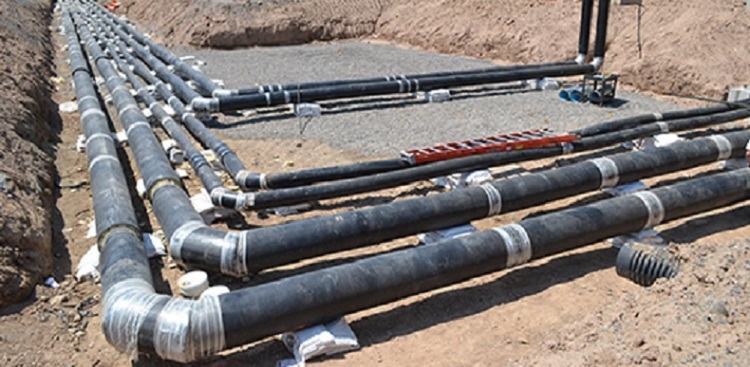The purpose of this plumbing method statement is to identify the requirements/methodology for installation of High Density Polyethylene Pipe / HDPE Pipe and fittings in as per the project specifications, drawings and the local regulations as applicable.
Over all it is the responsibility of site plumbing engineer and foreman to ensure that the HDPE pipe installation activities are carried out according to the specifications, drawing and approved method statement. They shall also ensure that all required submittals are made timely and approved, arrange all materials and tools required for installation of PE pipes as per agreed project schedule. Also provide all necessary information and distribute the responsibilities to his pipe installation team. Monitoring and ensuring that the work is performed in accordance within the time and cost constraints including HSE and quality requirements.
QA/QC shall be monitoring that all in process inspections and tests are carried out and approval from client/consultant is taken.
Material received at site shall be inspected and stored according to manufacturer recommendations, shall be stored in covered / dry space. When offloading, adequate manpower shall be used to unload the pipes without causing any damages.
Below is list of necessary tools and equipment’s for performing the HDPE piping works:
- Mechanical hand tool
- Cutting Tools
- Drilling Machine
- HDPE butt fusion / welding machine
HSE Requirements
Daily toolbox talks shall be conducted to make the workers aware of necessary HSE requirements, risks, hazards and control measures etc.
All safety precautions shall be followed as per the established Project Safety Plan.
Safety helmets, shoes, goggles and gloves shall be worn.
All PPE shall be worn as appropriate according to the nature of the job
Work area shall be maintained neat and clean on daily basis.
Sequence of Installation for HDPE Pipes
Prior to start of works related subcontractor and material approvals will be verified by the Project engineer.
Once the area is ready for installation of HDPE Pipe and fitting Project Engineer will coordinate with QA / QC Engineer for the internal inspection. Once accepted by QA / QC installation of HDPE Pipe and fitting will be done as per method statement.
Crane/forklift shall be used to shift the pipes from stored place to the installation area / site.
All necessary safety precautions as per established procedure shall be implemented during hdpe pipe shifting and installation.
The pipe sizes shall be cut according to the approved shop drawings / pipe schedule.
HDPE pipe shall be joined using butt fusion welding and electrofusion.
Smaller diameters up to 75mm will be connected via hot plate welding. Pipes above 75mm shall be connected using a butt fusion machine and as recommended by butt welding machine supplier.
For HDPE electrofusion welding, HDPE accessories are provided with spigot ends. The spigot ends are provided with low irregularities and the welding sleeve has projections to allow their exact distance apart to be determined.
HDPE electrofusion weld sleeve is provided with 2 socket ends which can be welded in a single operation.
The welding equipment sends current through the resistance wires in the electro-weld socket for a set period. Both electro-weld sockets are welded at the same time.
Electrofusion weld socket has stops on the interior. The socket has two contact pins on the outside for the connection of the welding equipment.
There are two welding indicators which appear during and after the welding operation. These indicate that the welding has been reached and that the welding pressure has been applied.
The connector cables from the welding equipment should be connected to electro-weld socket.
This will illuminate “connection” indicator lamp.
Press the start button. The welding indicator lamp will illuminate. Once the welding time is complete the lamp automatically extinguishes and the current supply switches off.
Check the weld indicators. They should have emerged by around 2mm.
In butt welding (pipes 75mm and smaller) both pipe ends are placed against a hot plate at a constant temperature and pressure.
After removing from heater the plastic pipe ends are now pressed together so that the molecules of the material are transferred between them.
Before starting hot plate welding the equipment shall be checked for the following items:
The hot plate temperature must be 210 degree Celsius.
The hot plate must be clean and free of grease.
Ensure that the two pipe brackets and the two pipe supports are correctly aligned.
Both pipe clamps must be adjusted so that they hold the pipe tightly enough to withstand the force of the welding process.
Press the pipe ends against hot plate by briefly applying a high pressure. Continue heating very low pressure until an up stand of 1 mm has formed.
Quickly remove the hot plate and join two sides slowly increase the welding pressure.
Hold the welding pressure steady and allow the weld to cool.
Remove the joint and inspect the weld. An irregular weld seam should be rejected.
Install the pipe according to approved shop drawing.
After installation of HDPE Pipe and fitting is completed Project Engineer will raise work inspection request WIR to QA QC Engineer and QA QC Engineer upon his satisfaction will forward the subject WIR for consultant inspection and approval.
After approval for installation, pipe shall be hydrostatically tested.
Piping system is tested at the pressure of 1.5 times the working pressure of the system
The consultant shall check the hydraulic / hydrostatic pressure test and give approval accordingly.
Attachments
Inspection and Test Plan ITP
Installation Check List
HSE Risk Assessment
